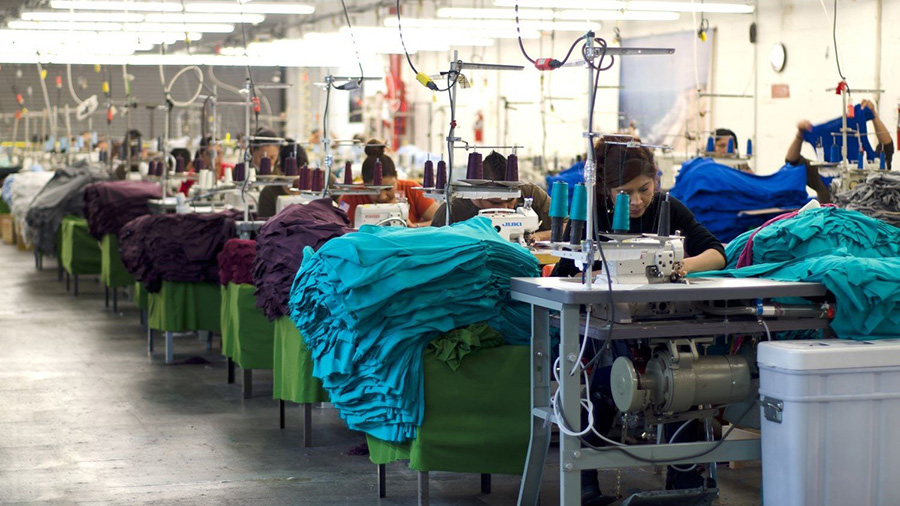The Institute for Supply Management (ISM) reported that economic activity in the manufacturing sector contracted in July for the fourth consecutive month and the 20th time in the last 21 months, said the nation’s supply executives in the latest Manufacturing ISM Report On Business.
The report was issued today, August 5, by Timothy R. Fiore, CPSM, C.P.M., Chair of the ISM’s Manufacturing Business Survey Committee.
“The Manufacturing PMI registered 46.8 percent in July, down 1.7 percentage points from the 48.5 percent recorded in June,” offered Fiore. “The overall economy continued to expand for the 51st month after one month of contraction in April 2020. (A Manufacturing PMI above 42.5 percent over a period of time generally indicates an expansion of the overall economy.) The New Orders Index remained in contraction territory, registering 47.4 percent, 1.9 percentage points lower than the 49.3 percent recorded in June.”
The report indicated that the July reading of the Production Index (45.9 percent) was 2.6 percentage points lower than June’s figure of 48.5 percent.
The Prices Index registered 52.9 percent, up 0.8 percentage points compared to June’s reading of 52.1 percent.
The Backlog of Orders Index registered 41.7 percent, equaling its June reading.
The Employment Index registered 43.4 percent, down 5.9 percentage points from June’s figure of 49.3 percent.
“The Supplier Deliveries Index indicated slowing deliveries, registering 52.6 percent, 2.8 percentage points higher than the 49.8 percent recorded in June,” Fiore continued. “Supplier Deliveries is the only ISM Report On Business Index that is inversed; a reading above 50 percent indicates slower deliveries, which is typical as the economy improves and customer demand increases.”
The Inventories Index registered 44.5 percent, down 0.9 percentage points compared to June’s reading of 45.4 percent.
The New Export Orders Index reading of 49 percent is 0.2 percentage points higher than the 48.8 percent registered in June.
The Imports Index remained in contraction territory in July, registering 48.6 percent, 0.1 percentage point higher than the 48.5 percent reported in June.
“U.S. manufacturing activity entered deeper into contraction,” Fiore noted. “Demand was weak again, output declined and inputs stayed generally accommodative. Demand slowing was reflected by the (1) New Orders Index dropping further into contraction, (2) New Export Orders Index continuing in contraction, (3) Backlog of Orders Index remaining in strong contraction territory, and (4) Customers’ Inventories Index moving lower to the higher end of ‘too low.'”
Output, measured by the Production and Employment Indexes, reportedly declined compared to June, with a combined 8.5 percentage point downward impact on the Manufacturing PMI calculation. Panelists’ companies reduced production levels month over month as head-count reductions continued in July. Inputs, defined as supplier deliveries, inventories, prices and imports, generally continued to accommodate future demand growth.
“Demand remains subdued, as companies show an unwillingness to invest capital and inventory due to current federal monetary policy and other conditions,” Fiore said. “Production execution was down compared to June, likely adding to revenue declines and putting additional pressure on profitability. Suppliers continue to have capacity, with lead times improving and shortages not as severe.”
Eighty-six percent of manufacturing gross domestic product (GDP) contracted in July, up from 62 percent in June. More concerning, Fiore said the share of sector GDP registering a composite PMI calculation at, or below, 45 percent (a good barometer of overall manufacturing weakness) was 53 percent in July, 39 percentage points higher than the 14 percent reported in June.
“Notably, all six of the largest manufacturing industries—Machinery, Transportation Equipment, Fabricated Metal Products, Food, Beverage & Tobacco Products, Chemical Products, and Computer & Electronic Products—contracted in July,” said Fiore.
The five manufacturing industries reporting growth in July were Printing and Related Support Activities, Petroleum and coal products, Miscellaneous Manufacturing, Furniture and related products, and Nonmetallic Mineral Products.
The 11 industries reporting contraction in July are in order as follows: Primary Metals, Plastics and Rubber Products, Machinery, Electrical Equipment, Appliances and Components, Transportation Equipment, Fabricated Metal Products, Food, Beverage and Tobacco Products, Wood Products, Paper Products, Chemical Products, and Computer and Electronic Products.
Image courtesy Nature USA
















